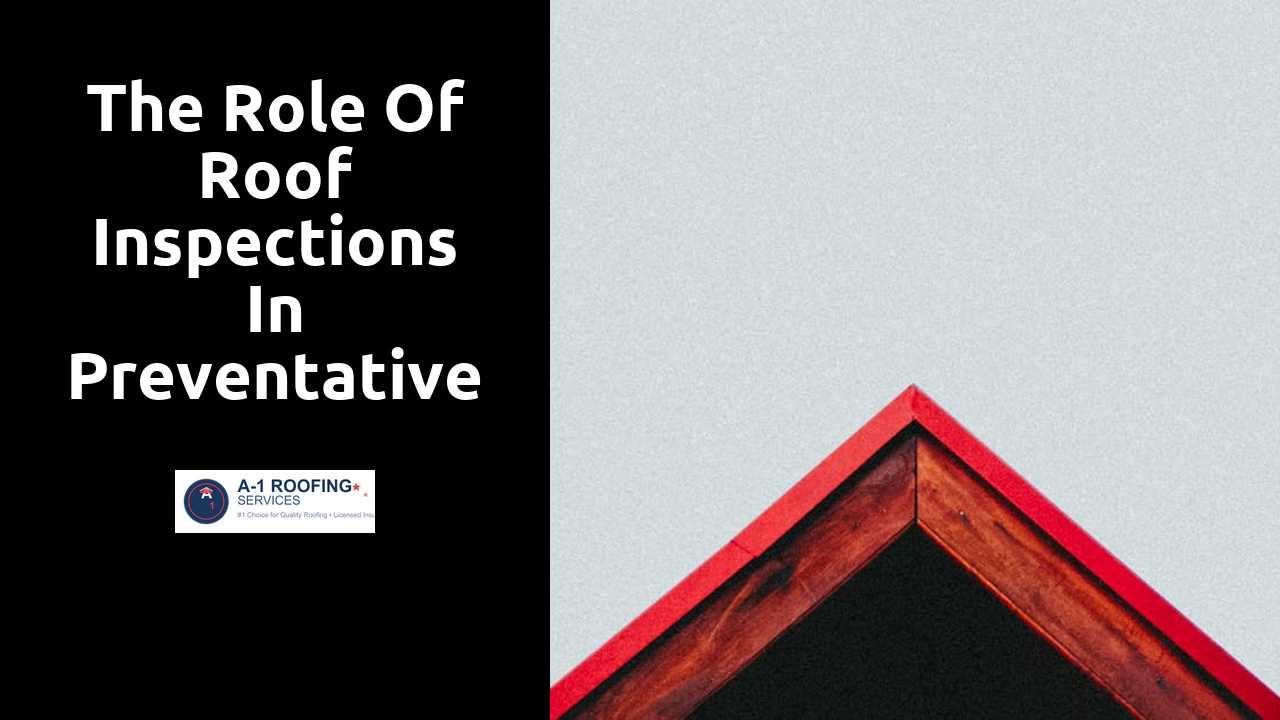
The Role of Roof Inspections in Preventative Maintenance
Table Of Contents
Choosing a Qualified Inspector
Selecting an experienced inspector is crucial for a thorough roof evaluation. Look for professionals who possess relevant certifications and licenses specific to your state or local area. Industry affiliations with organizations such as the National Roofers Contractors Association can also indicate a commitment to maintaining high standards. It's beneficial to check their track record, including reviews from previous clients and examples of past work. This ensures that you are entrusting your roof to someone with a proven ability to identify potential issues.
Communication skills represent another key aspect when choosing an inspector. A qualified professional should be able to explain their findings clearly and provide detailed reports. Transparency regarding their inspection process and any potential costs associated with repairs is equally important. Ask about the tools and techniques they utilize during inspections. This information can provide insight into their approach and help gauge the thoroughness of their work. Enlisting an inspector who approaches the job with diligence can save homeowners substantial costs in the long run.
Navigate to these guys for detailed information.
What to Look for in a Roofing Professional
When searching for a roofing professional, experience and reputation are crucial factors. A contractor with several years in the industry typically brings a wealth of knowledge and practical skills. Potential clients should seek reviews and testimonials from previous customers to gauge the quality of their work. A reputable contractor often displays certifications and affiliations with professional organizations, showcasing their commitment to industry standards.
Licensure and insurance should not be overlooked during the selection process. A qualified roofing professional will have the necessary licenses to operate legally within your state. Furthermore, liability insurance protects both the contractor and the homeowner in case of accidents or damages. It is also advisable to request a detailed estimate and a clear timeline for the project, ensuring transparency throughout the process.
Technologies in Roof Inspections
Advancements in technology have significantly enhanced the way roof inspections are conducted. Drones equipped with high-resolution cameras allow inspectors to access hard-to-reach areas without the risk of climbing ladders or scaffolding. These aerial views provide a comprehensive overview of the roof's condition, making it easier to identify issues like damaged shingles or leaks without physical contact.
Moreover, thermal imaging cameras have become an invaluable tool for detecting hidden problems. Using infrared technology, these cameras can reveal areas of heat loss, indicating insulation issues or moisture buildup beneath the roofing materials. This proactive approach helps homeowners address potential concerns before they escalate, highlighting the importance of integrating modern technology into routine inspections.
Modern Tools and Techniques
Advancements in technology have greatly enhanced the methods used for roof inspections. Drones equipped with high-resolution cameras can capture detailed images of roofs without the need for ladders or scaffolding. This not only improves safety but also allows inspectors to assess hard-to-reach areas more effectively. Additionally, thermal imaging cameras have become popular tools for identifying heat loss through roofs, revealing potential insulation issues hidden from plain sight.
Another noteworthy innovation is the use of moisture meters, which help determine the extent of water damage within roofing materials. These devices can quickly detect moisture levels in roofs, informing inspectors about potential leaks or areas of concern that need addressing. As these modern tools become more accessible, they improve the accuracy and efficiency of roof assessments, ensuring that homeowners receive comprehensive evaluations of their roofing systems.
DIY Roof Inspection Tips
Regular roof inspections can help homeowners identify potential issues before they escalate into costly repairs. Start by checking for visible signs of damage from the ground. Look for missing or damaged shingles, sagging areas, and any debris that may have gathered on the roof. If you notice any irregularities, it might be best to schedule a professional inspection for a more thorough evaluation.
When you decide to conduct a more in-depth inspection, prioritize safety first. Always use a sturdy ladder and ensure it rests securely on the ground. Wear non-slip shoes and have someone nearby who can assist in case of an emergency. Take your time and avoid rushing through the inspection. Document any findings with photographs, so you can reference them later or share them with a roofing professional if needed.
Safety Precautions to Consider
Prioritizing safety is essential when inspecting a roof. Always wear appropriate personal protective equipment, including a hard hat, safety goggles, and non-slip shoes to prevent accidents. It is advisable to use a sturdy ladder that is rated for your weight and can support any tools you may bring. Ensure the ladder is positioned on stable ground and that someone is available to hold it steady while you climb. This helps prevent falls and ensures a secure working environment.
Consider the weather conditions before beginning an inspection. Avoid performing roof checks during rainy or windy days as these can significantly increase the risk of slipping or losing balance. Additionally, be mindful of the roof's structural integrity. Look for signs of weakness, such as sagging or loose shingles, which may indicate potential hazards. Carry minimal tools and materials to reduce your load while on the roof, further enhancing your safety.
Related Links
DIY Roof Inspection Techniques for HomeownersHow to Prepare for a Roof Inspection